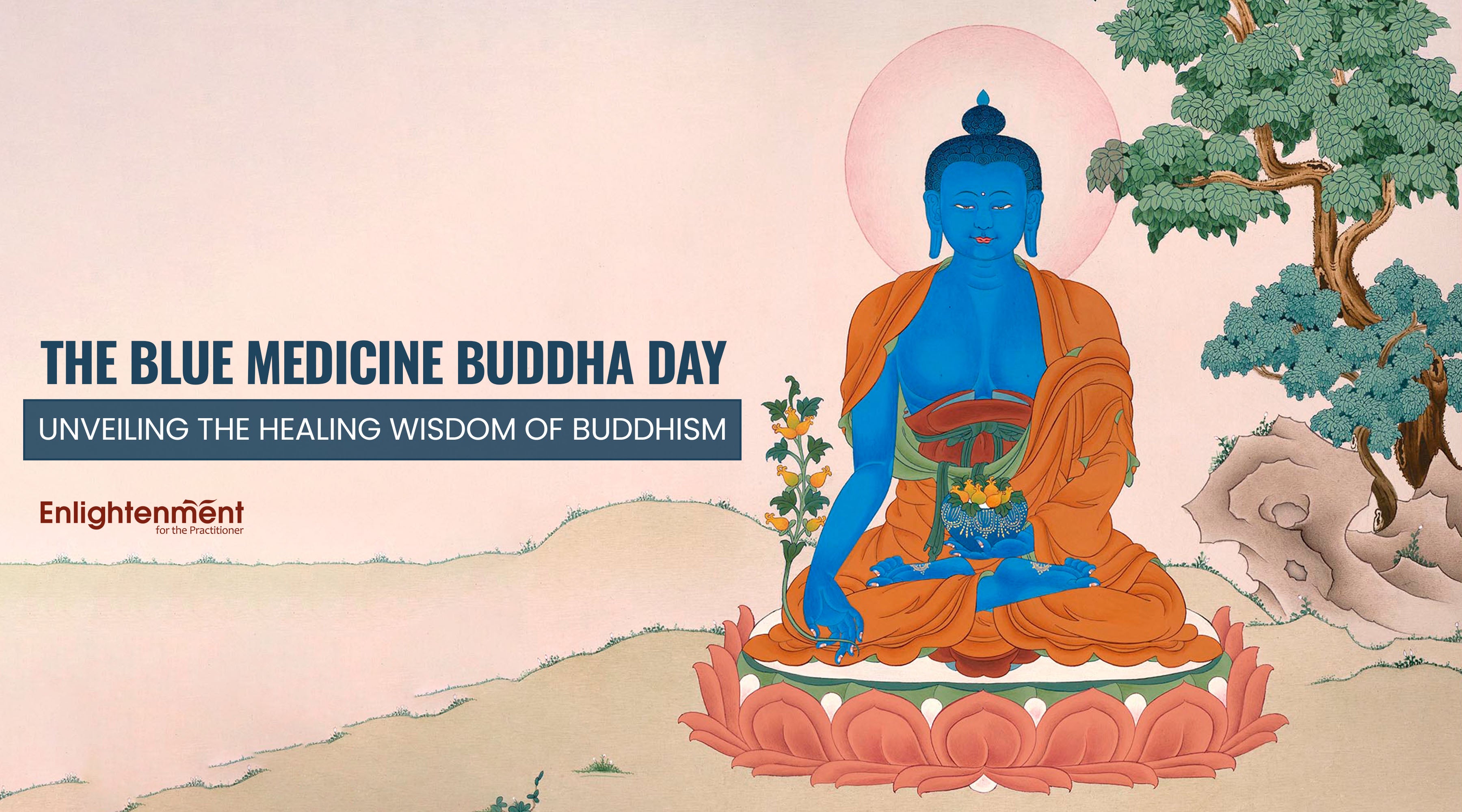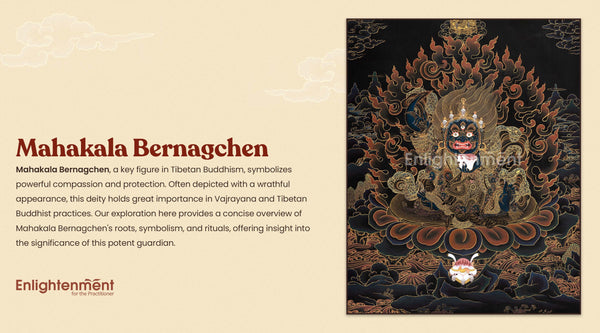The Blue Medicine Buddha Day: Unveiling the Healing Wisdom of Buddhism
Medicine Buddha Day stands out as a powerful emblem of healing and compassion within the rich tapestry of Buddhist traditions. More than a mere religious ritual, it unfolds as a holistic spiritual odyssey into wellness and restoration.
Through a lens that extends beyond religious boundaries, it provides a nuanced understanding of how this tradition nurtures individual health, cultivates a sense of community, and fosters spiritual growth.
Key Takeaways
- The Medicine Buddha Day epitomizes the intersection of spirituality and healing.
- It provides a platform for engaging in spiritual practices like meditation, chanting, and prayer.
- Insights into the Medicine Buddha's teachings reveal deep connections between the mind, body, and spirit.
Historical Background and Significance
Click here to view our Medicine Buddha Statue
Origins of the Medicine Buddha
Originating from Mahayana Buddhist texts, Bhaisajyaguru, or the Medicine Buddha, symbolizes healing, embodying a commitment to alleviate all forms of suffering, as outlined in ancient scriptures. His presence serves as a beacon of hope and relief.
Significance in Different Buddhist Traditions
The celebration of Medicine Buddha Day takes on unique expressions across various Buddhist traditions. In Tibetan Buddhism, the day is marked by intense prayer and meditation, emphasizing a spiritual connection. In East Asian traditions, the observance involves elaborate rituals and offerings, yet the underlying theme persists a dedicated focus on spiritual healing and the well-being of all sentient beings.
Practices and Rituals of the Medicine Buddha Day
The Medicine Buddha Day, steeped in the rich traditions of Buddhism, is marked by a variety of profound and transformative practices and rituals. These practices are designed to honor the Medicine Buddha, Bhaisajyaguru, and facilitate healing, compassion, and spiritual growth among practitioners. Here, we explore these practices and rituals in depth.
Meditation and Visualization
Meditation is central to the practices observed on Medicine Buddha Day, with a specific emphasis on directing attention towards the Medicine Buddha. This involves engaging in profound concentration and visualization techniques.
- Visualizing the Medicine Buddha: Commencing their meditation, practitioners intricately envision the Medicine Buddha, vividly picturing his serene and compassionate countenance. The deep blue hue of his body, symbolizing the healing potency of the dharma, becomes a focal point. Some even extend their imagination to envision healing light from the Medicine Buddha. This visualization isn't merely an imaginative exercise; it is believed to actualize the healing energies associated with the Medicine Buddha.
- Thangka and Statues: Frequently, practitioners utilize a thangka (a traditional Tibetan Buddhist painting) or a statue of the Medicine Buddha as a central focus during meditation. These tangible representations serve as reminders of the virtues embodied by the Medicine Buddha, enhancing the efficacy of the visualization process.
Chanting and Mantras
Chanting mantras holds significant importance during Medicine Buddha Day, serving as a pivotal practice to harness the healing power of the Buddha.
- Mantra Recitation: Practitioners repetitively recite the sacred mantra, "Tayata Om Bekandze Bekandze Maha Bekandze Radza Samudgate Soha." Each syllable in this mantra is believed to possess distinct spiritual power. Typically conducted in a group setting, the collective chanting creates a potent, resonant environment that amplifies the overall spiritual experience.
- Meaning and Intent: Integral to the practice is understanding the mantra's meaning. Each word within the mantra symbolizes various facets of healing and enlightenment. For example, "Bekandze" conveys the elimination of pain, "Maha Bekandze" signifies the eradication of great suffering, and "Radza Samudgate" denotes the supreme king. The repetition of the mantra, coupled with comprehension and intent, intensifies its effectiveness. The repetition of the mantra with understanding and intent magnifies its efficacy.
Medicine Buddha Mantra
“Namo Bhagavate bhaisajya guru vaidurya prabha rajaya
Tathagataya Arhate samyaksambuddhaya tadyatha
Om bhaisajye bhaisajye bhaisajya samudgate Svaha”
Rituals and Offerings
The Medicine Buddha Day observance emphasizes rituals and offerings, serving as expressions of devotion and avenues to accumulate spiritual merit.
- Making Offerings: Traditional offerings, such as incense, flowers, and light (candles or butter lamps), are symbolic gestures. Incense symbolizes the purification of one's practice, flowers represent the impermanence of life, and light signifies the dispelling of darkness or ignorance.
- Ceremonial Rituals: Within many Buddhist communities, special rituals unfold on this day. These may encompass rituals like bathing the Buddha statue, symbolizing purification and renewal. Lamas and monks often lead devoted prayer sessions and ceremonies, blessing the participants.
Healing Practices
Given the Medicine Buddha's association with healing, numerous practices on this day are explicitly designed to enhance physical and mental well-being.
- Prayers for Healing: Devotees actively partake in prayers, seeking healing for themselves or others. This act serves as a potent expression of compassion and interconnectedness.
- Laying on of Hands: In certain traditions, rituals involve monks or practitioners placing their hands on individuals or representations of the Medicine Buddha, invoking healing energies. This practice intensifies the focus on healing and overall well-being, often accompanied by mantra recitation and prayers.
- Healing Circles: Communal gatherings known as healing circles bring participants together to collectively channel their energies toward self-healing and the well-being of others. These circles may include group meditations, chanting, and sharing personal experiences related to health and healing.
The Medicine Buddha's Teachings
Click here to view our Medicine Buddha Thangka For Meditation
The Twelve Great Vows
His twelve great vows represent a spectrum of compassionate commitments at the core of the Medicine Buddha's legacy. These vows span from healing the sick and alleviating poverty to assisting individuals on their spiritual journey toward enlightenment. Each vow stands as a testament to the profound compassion of the Medicine Buddha and his unwavering dedication to the well-being of all sentient beings.
|
Vow Number |
Description |
| 1 | To illuminate countless realms with his radiance, enabling anyone to become a Buddha just like him. |
| 2 | To awaken the minds of sentient beings through his light of lapis lazuli. |
| 3 | To provide the necessary conditions for the sick to regain health. |
| 4 | To relieve the needy and the poor of their suffering. |
| 5 | To help women who wish to be reborn as men achieve their desired rebirth. |
| 6 | To heal beings born with deformities, illnesses, or other physical sufferings. |
| 7 | To help those who are oppressed by various kinds of suffering. |
| 8 | To benefit those who have few resources and are without protectors. |
| 9 | To help those who have lost their way to find the path to enlightenment. |
| 10 | To provide a rich harvest for those who depend on agriculture for their livelihood. |
| 11 | To protect those who respect him and his teachings from falling into the lower realms of existence. |
| 12 | To help sentient beings attain enlightenment. |
Central to the legacy of the Medicine Buddha are his twelve great vows, encompassing a variety of compassionate commitments. From healing the sick and alleviating poverty to guiding individuals on their spiritual path toward enlightenment, each vow serves as a testament to the profound compassion of the Medicine Buddha and his steadfast dedication to the well-being of all sentient beings.
The Medicine Buddha Day Across The Globe
The Medicine Buddha Day, dedicated to Bhaisajyaguru or the Medicine Buddha, holds a significant place in the global Buddhist calendar. Its observance varies worldwide, reflecting diverse interpretations and practices within the Buddhist tradition. While the day universally centers on healing and spiritual rejuvenation, rituals, ceremonies, and practices differ widely.
- Tibet: In Tibetan Buddhism, the Medicine Buddha is deeply revered. His day involves elaborate ceremonies in monasteries and temples, featuring special prayer sessions led by monks. Devotees bring offerings like butter lamps, incense, and flowers. Meditation sessions, focusing on visualizing the Medicine Buddha, are integral to seeking spiritual and physical healing.
- China and East Asia: Countries like China, Japan, and Korea infuse unique cultural flavors into Medicine Buddha Day. Temples are adorned, and celebrations incorporate a mix of Buddhist chants and local customs. In China, offerings of medicinal herbs symbolize the healing aspect. Japanese and Korean Buddhists emphasize communal prayers, often including traditional music and processions.
- Southeast Asia: In Thailand, Myanmar, and Vietnam, the day emphasizes charity and community service. Devotees give alms to monks, distribute necessities to needy people, and organize health camps. These acts embody the Medicine Buddha's teachings on compassion and healing.
- India: In India, the birthplace of Buddhism, observance includes meditation, prayer sessions, and pilgrimages to holy sites like Bodh Gaya. Devotees participate in chanting sessions and listen to discourses on the life and teachings of the Medicine Buddha.
- Western Countries: In Western countries, where Buddhism is embraced widely, Medicine Buddha Day involves meditation retreats and Dharma talks. Events cater to practicing Buddhists and those interested in meditation and holistic healing. Workshops on Buddhist philosophy and the teachings of the Medicine Buddha are commonly organized.
- Online Observances: Digital technology has led to online observances, with virtual meditation sessions, webinars, and online prayer meetings allowing broader participation.
- Community and Individual Practices: Globally, community gatherings and individual practices mark Medicine Buddha Day. While temples organize large-scale events, many practitioners also observe the day individually, engaging in meditation, reading scriptures, and reflecting on the teachings of the Medicine Buddha.
The Medicine Buddha Day serves as a beacon of hope and healing in a world often marred by suffering. Beyond religious observance, it offers a path to holistic health, spiritual growth, and compassionate living. This day reminds us of our interconnectedness and collective responsibility towards the well-being of all beings, providing insights for anyone seeking peace and wellness in their lives.


